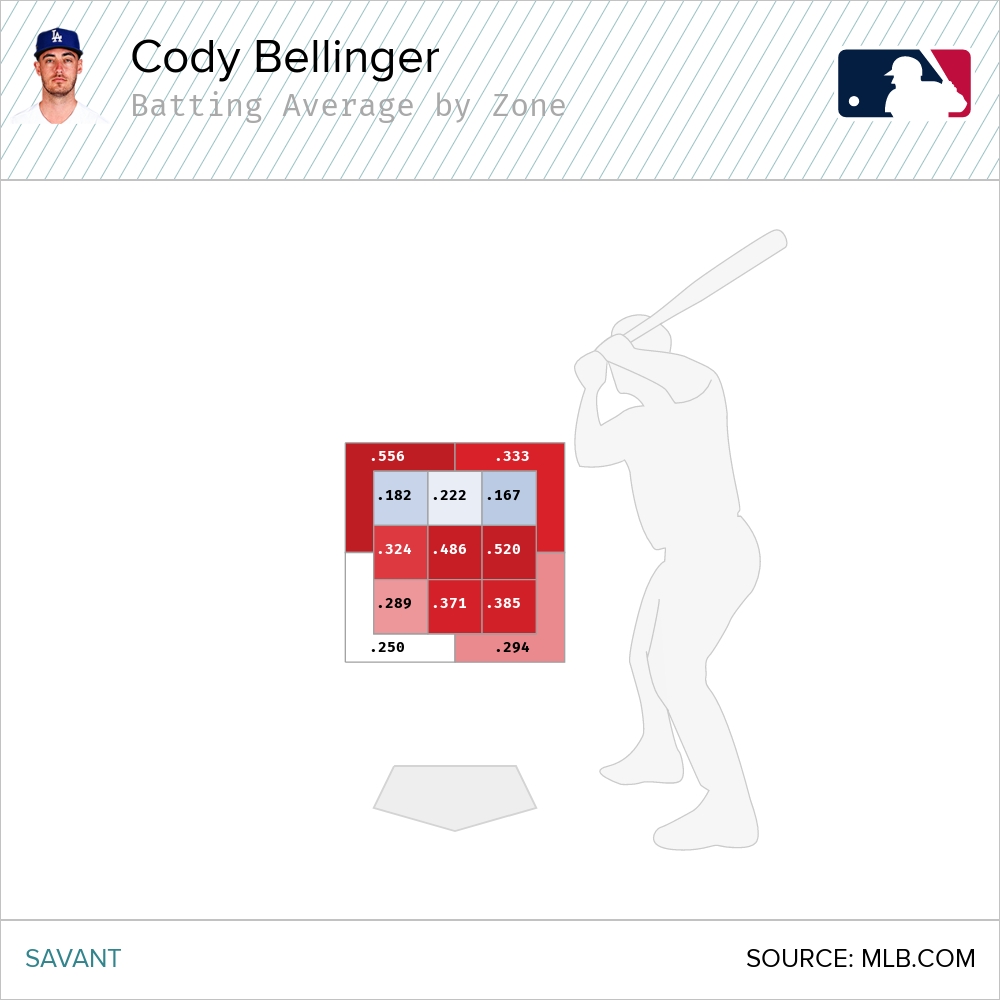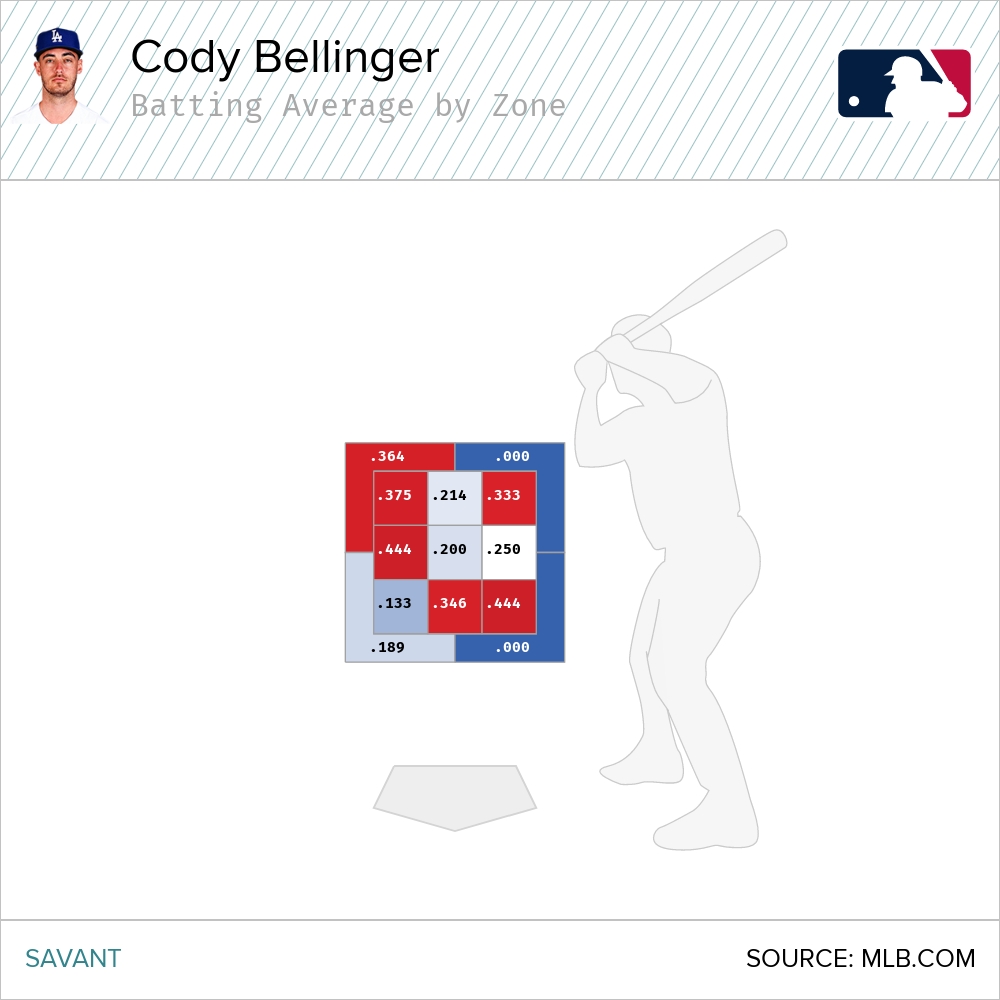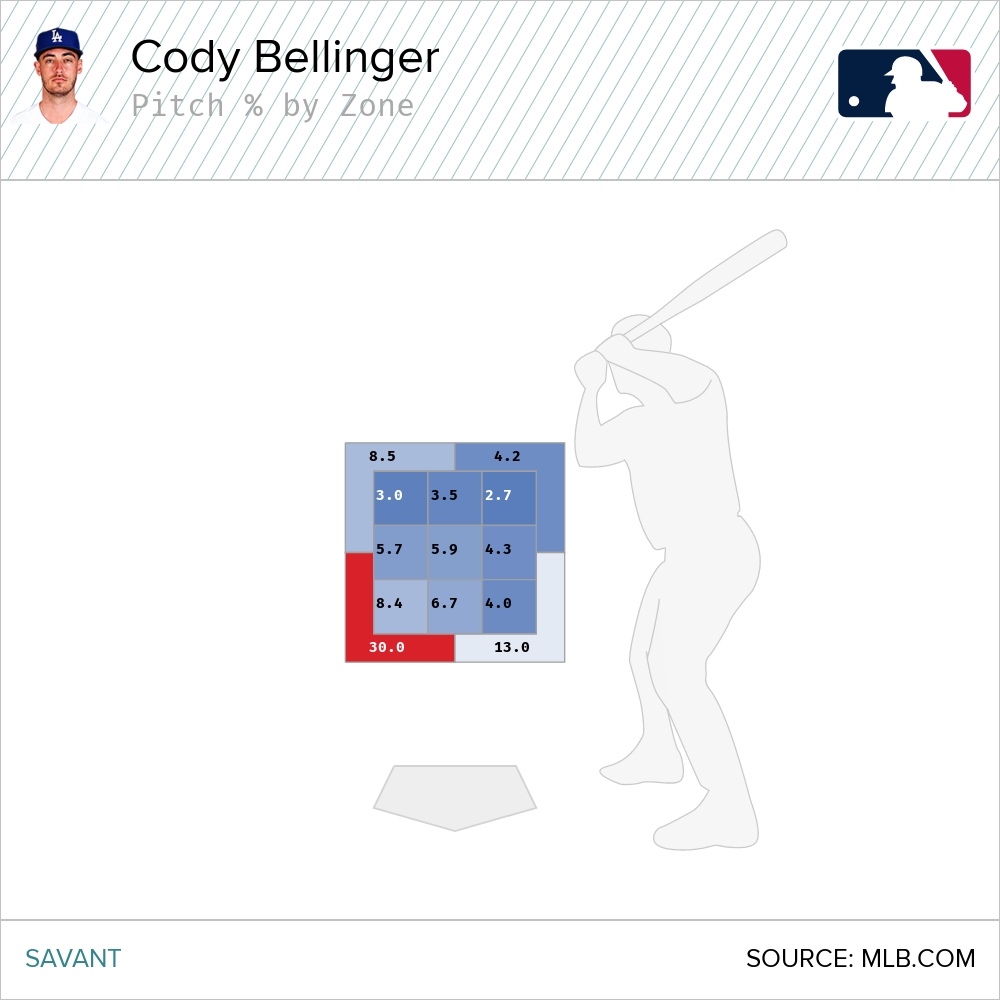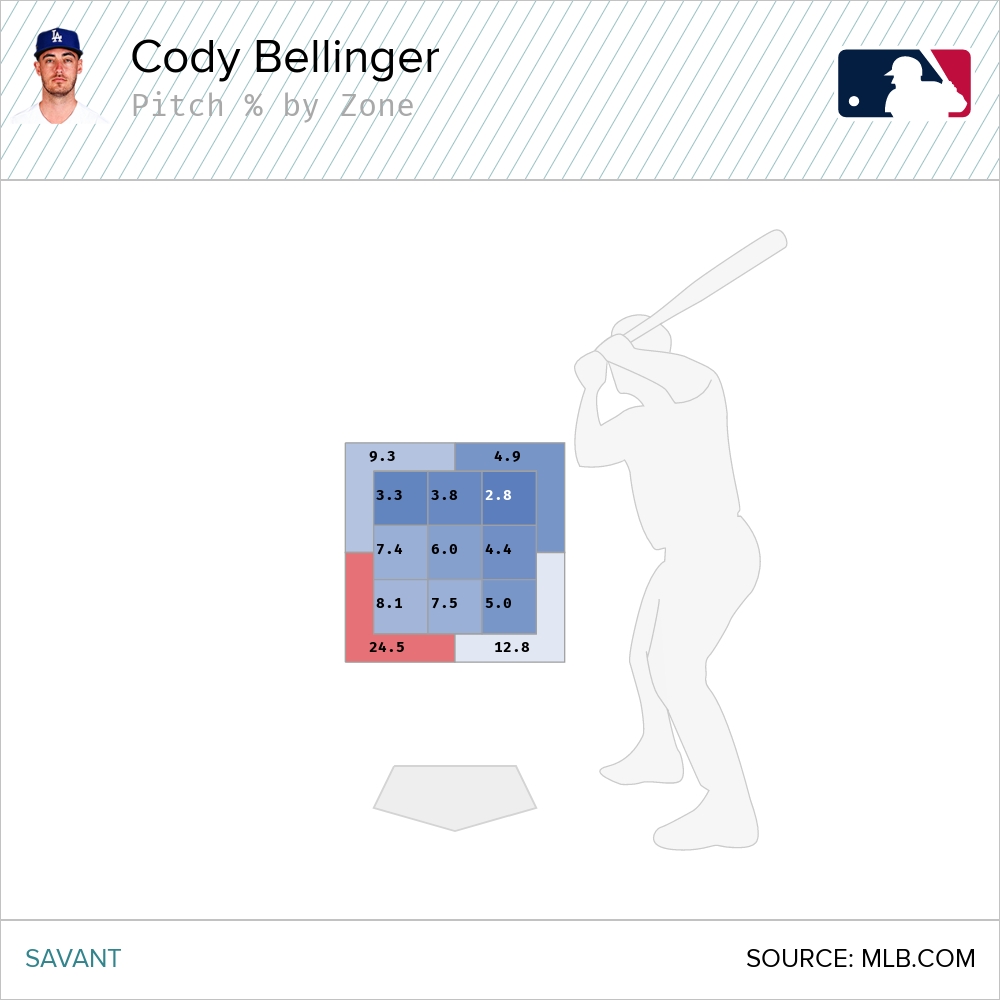It’s easy to question why a hitter as unbelievably good as Cody Bellinger would change his swing. But even after producing a season that saw 47 home runs, a 162 wRC+, and an NL MVP title, Bellinger thinks that there is room to improve. And maybe he’s right.
When I first noticed a change in Bellinger’s stance while watching the Dodgers play an intrasquad scrimmage, I didn’t think anything of it. I assumed it was just part of his preparation for the season and finding comfort at the plate. But when Dodgers beat reporter Ken Gurnick reported the changes were intentional, it immediately became interesting. Here’s a look at Bellinger’s adjustments.
https://gfycat.com/quaintgloomyappaloosa-baseball
Off the bat, here’s what I see:
- Not standing as upright, more posture over the plate
- Hands are a bit lower and pulled back with more barrel tilt
- Slight bend in the knees
These are the kinds of adjustments I would expect from a hitter aiming to elevate the ball more. But with an average launch angle of 17.6 degrees and a 90.7 mph average exit velocity, Bellinger doesn’t desperately need to lift the ball more. The only thing we know for sure is that Bellinger was unhappy with how he hit in the second half. This sent Alex Fast and me down a rabbit hole into identifying what went wrong and what could be improved on.
It would be insane to expect Bellinger to repeat his first half production after the All-Star break, but his drop off in production was still a bit surprising. It was still very productive, but far from his god-like performance in the first half.
| PA | AVG | OBP | SLG | wOBA | wRC+ | |
| First Half | 318 | .336 | .432 | .692 | .448 | 183 |
| Second Half | 241 | .261 | .370 | .544 | .370 | 132 |
Bellinger saw worse results in every aspect of hitting and his expected results showed the same trend.
| xBA | xSLG | xwOBA | |
| First Half | .358 | .712 | .469 |
| Second Half | .277 | .540 | .376 |
Identifying why he performed worse is always the hard part, but there’s enough public data to draw some conclusions. For example, Bellinger’s plate discipline did not change at all. He didn’t begin to chase pitches, he didn’t strike out much more, he didn’t swing and miss at a different rate, and he walked at nearly an identical rate. So, if Bellinger wasn’t straying away from the approach that brought him his first half success, then it is probably safe to assume pitchers developed a different approach against him.
The primary difference lies in zone location and his quality of contact. When we look at his zone profile by batting average, we can start to see some changes. Of course, batting average isn’t the best tool for measuring a hitter’s ability, but it can give us a decent starting point.

First Half

Second Half
In the first half, Bellinger crushed the ball in just about every zone, except the top of the strike zone. In the second half, he saw a substantial fall off on pitches over the middle of the plate and pitches low and away. Now these are just averages, so maybe he saw fewer pitches in those zones? Well, he didn’t and that’s what makes this interesting.

First Half

Second Half
So if the rate in which he saw pitches in specific zones didn’t really change, but the results did, then there has to be more to it. We can narrow these zones down a bit more and filter out the waste and chase pitches. Since Bellinger did not chase any more in the second half than he did in the first half, we don’t really care about pitches that aren’t hittable for him. Let’s focus on the zones where Bellinger did not hit well and look at specific pitches.
| xwOBA by Pitch Type on Swings | |||
| Fastballs | Offspeed | Breaking | |
| First Half | .532 | .332 | .487 |
| Second Half | .337 | .146 | .092 |
All of these pitches and locations were thrown and swung at in a similar rate, but Bellinger failed to continue covering these zones well. He predominantly struggled in two areas: everything low and away, and inside pitches that were in the middle of the zone (vertically).
Now back to the mechanical changes. Do they make sense for what we see? Kind of. The change in posture, having more of his upper body leaned over the plate, could be a conscious effort to improve his results with those low and away pitches. It would easily improve his plate coverage while setting him up to better match the plane of the pitch. Like Fast said on twitter, no LHH saw more pitches low and away than Bellinger did last season. If Bellinger is prepared to see more of the same, he might be trying to maximize his performance against these pitches. As for the slight bend in his knees, it might just be an adjustment to balance himself while changing his posture. The last subtle change is the set up of his hands. This could be purely a change for comfort, but it could also be his way of trying to increase the separation he get’s when he’s making his stride. Increasing his separation, in theory, could increase his window for pitch recognition. The better his pitch recognition is, the stronger he will perform against pitches of differing spins and speeds.
In my opinion, I think the posture might be the most important change for Bellinger (if he feels he needs one) if he wants to do damage on those low and away pitches. If you watch him swing a lot, you’ve probably noticed that he looks he’s always ripping off the ball with his front side and always strides open. Of course being as elite of a hitter as he is, we know his swing works. He isn’t really coming off of the ball and I’m sure his stride helps him generate massive amounts of separation and power. It’s a little bit like a left-handed Khris Davis swing. But I wonder if the posture could help him in covering those troublesome zones. Could it be the difference in consistently turning results like this:
https://gfycat.com/blushingsoftafricanhornbill
Into results like this?
https://gfycat.com/happygoluckygiantewe
I don’t know. Maybe all of Bellinger’s adjustments are just changes for comfort. I could be completely off from what he is really trying to do with his swing—and that’s ok! But it’s pretty clear where he struggled in the second half and any changes with the aim of improving those shortcomings, will probably pay dividends for Bellinger. If you’re a self-proclaimed hitting guru who worries the changes will only make him worse, take a breath. Even in his 2018 “down year” Bellinger held a 120 wRC+! The kid can go full Hunter Pence on us with his swing and he’ll probably still mash.
Photo by Brian Rothmuller/Icon Sportswire | Adapted by Michael Packard (@designsbypack on Twitter & IG)

This is some elementary swing analysis.